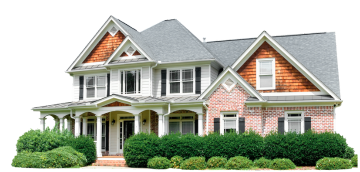Ever looked at your hipped roof and thought, “what if…..?” If you live in a semi-detached or detached house in the UK, especially around London, Brighton, Manchester, or Leeds a hip to gable loft conversion might be the best way to access valuable space.
In today’s modern era, it’s the smartest way to add space, value, as well as functionality to your home without needing to extend outward. But the most concerning question is “what is hip to gable oft conversion? And how does it work? ” Well, this guide is packed with expert-driven, concise answers to the most asked questions. So, let’s get started!
What is a hip to gable loft conversion?
A hip to gable conversion changes the sloped side of your roof (called the hip) into a straight, vertical wall (the gable). This helps create more room inside your loft, making it suitable for a bedroom, home office, or even an ensuite.
Hip roof Vs gable roof; what’s the difference?
It’s simple yet distinct:
- A hipped roof slopes down on all sides, limiting loft space.
- A gable roof has two slopes with flat ends, which is ideal for extensions and conversions.
Switching from a hip to a gable gives you extra height and volume in your attic. That’s why the gable end loft conversion is a go-to upgrade for sloped roof homes.
Types of hip to gable conversions
Wondering what kind of hip and gable roof combination conversion best suits your home? Well, there’s no size fits all approach; it really depends on your roof style, location and how much space you want. Below are the most common types, along with where they’re typically found.
-
Single hip to gable loft conversion
This is the most popular option for semi-detached or end of terrace homes, especially across towns like Harrow, Croydon, and Barking. The conversion removes the sloping side of the roof, and replaces it with a vertical gable wall on the end.
-
Double hip to gable loft conversion
Got a detached home with sloped sides on both ends? Double hip to gable converts both hips into vertical gable walls. This gives you an almost square loft footprint, essentially transforming the entire top floor into usable space.
-
Hip to gable loft conversion with rear dormer
One of the most in-demand combinations. This conversion replaces the hip with a gable wall and adds a rear dormer extension to the back of the room. The dormer creates even more headrooms and allows you to install large windows or Juliet balconies for natural light and ventilation.
-
Pyramid hip roof loft conversion
This type is designed for homes with a pyramid-style hipped roof, usually square-shaped bungalows or chalet-style houses. Instead of having a clear “side” to convert, pyramid roofs slope on all four sides. That means a standard hip to gable conversion won’t work unless customised.
Pros and cons of hip to gable loft conversion
|
Pros |
Cons |
|
Turn wasted roof space into full-height rooms |
Not suitable for mid-terrace houses |
|
Adds long-term property value |
Structural changes can be complex |
|
Hip to gable loft conversion. Often falls under permitted development |
More expensive than a Velux-only conversion |
|
Great for future proofing homes |
Potential impact on neighbours’ light |
|
Blends well with the home’s architecture |
Party wall agreement might be required |
|
Maximises awkward roof layouts |
Construction can be disruptive |
|
Great for ensuite, office or extra bedrooms |
Planning rules vary locally. Always double check |
What are the Rules and regulations for hip-to-gable conversion?
Before you start knocking down walls, it’s important to understand the legal side of things. A hip to gable loft conversion is a big structural change, and it must meet both national regulations and local authority rules. Here’s what you need to know:
-
Permitted development
In most cases, a hip to gable loft conversion falls under permitted development rights, which means you don’t need full planning permission. However, there are limits:
- The loft extension must not exceed 40m3 for terraced houses or 50m3 for semi-detached and detached homes.
- It must not overhang the outer wall of your home.
- Material should be similar to the existing roof and exterior.
- No balconies or raised platforms are allowed.
If your home is in a conservation area, listed building, or new build estate, you seem to need full planning permission.
-
Building regulations
Even if you don’t need planning permission, your conversion must still comply with UK building regulations. These covers:
- Structural safety
- Fire safety
- Thermal performance
- Stair design
- Sound proofing
Paramountbuilt handles this step by providing structural calculations and architectural drawings and liaising directly with building control on your behalf.
-
Party wall agreement
If your home shares a wall with a neighbour, common in semi-detached or terrace houses, you will need to comply with the Party Wall Act 1996. This means:
- Notifying neighbours in writing at least two months in advance
- Getting a signed agreement (or appointing a surveyor if they dissent)
- Converting any structural work that affects the shaded wall, like steel support or cable construction.
Don’t worry this is the routine. Till getting the expert guidance throughout the process is essential to make it seamless.
-
Conservation area & listed buildings
If you live in a conservation area or in a listed building, your project will likely need full planning permission. The council may restrict alterations to rooflines that affect the building’s character.
Here’s what to do:
- Submit detailed drawings to your local planning department
- Highlight how your design maintains the area’s visual integrity
- Be prepared for coordinations or modifications to be added
What is the price of converting a hip to a gable loft?
The average hip to gable loft conversion cost in the UK ranges from £40,000 to £65,000, though this can vary depending on several factors. The size and structural complexity of your home play a big role, as does your location; areas like London or Surrey tend to be more expensive due to higher labour and material costs.
Adding features like rear dormer, bathroom ensuite, or premium finishes will also push the cost to the upper end of the range. For example, if you are planning a hip to gable dormer loft conversion in a high-demand area such as South London, it’s wise to budget on the higher side to accommodate all designs and compliance needs.
Features to include on your hip-to-gable loft conversion
If you are investing in a hip gable loft, it makes sense to include features that boost comfort, functionality, value and long-term usability. If you are building a bedroom, office or multi-use space, here’s what to consider:
Rear dormers
A rear dormer extension is one of the most popular additions to hip to gable conversion. It creates a box-shaped room at the back of your home, giving you full head height across most of the loft.
Skylights or Velux Windows
Install velux windows or skylights on the sloped part of your roof. These are ideal for letting in daylight without changing the roofline at the front. You can also go for solar powered skylights with rain sensors and remote control.
Ensuite bathrooms
An ensuite bathroom is a game change. It adds privacy, comfort, and convenience. And it’s especially popular for growing families or when renting out the space. Just make sure your plumbing can be connected easily to the existing soil or drainage.
Integrated storage
Lofts can have awkward corners and sloped ceilings, but with the right design, you can turn those into built-in-wardrobes, shelves or drawers. Smart eaves storage lets you maximise space without cluttering the room.
Eco-friendly solutions
Since you’ll be rebuilding parts of your roofs, it’s the perfect time to upgrade your insulation. Use high-performance thermal and acoustic insulation to reduce heat loss, cut energy bills, and keep things quiet.
Bespoke staircase
Choose something compact but comfortable, like space-saver stairs or a straight-run timer staircase with roofline lighting. The design should match your existing interior style and comply with the building regulations.
Is your home suitable for hip to gable extension?
Here is a checklist to find out:
- You have a hip roof
- You are in a semi-detached, end of terrace, or detached property.
- The existing ridge height is around 2.2m or more
- There are no planning restrictions in your area
- You want to add an extra room or two without extension outward
Converting your loft with Paramountbuilt’s architects
Paramountbuilt offers much more than just a design; it delivers a full architectural experience personalised to your home and needs. Our team has deep knowledge of local planning rules, especially across areas like London, Sussex, Birmingham, and a number of more which help us navigate approvals with ease.
Every design is crafted by RIBA & ARB registered architects that also handles all the aspects of planning permissions and building regulation compliance. You’ll get transparent pricing, realistic timelines, and no last minute surprises.
Our in-house structural engineers ensure accuracy and safety. We carry out on-site quality inspections throughout the project, and with over 500 happy homeowners trusting us, we’ll have access to references and real projects you can visit locally.
FAQ’S
A dormer is an added windowed box out of the roof slope. A hip to gable actively alters the roof structure by extension of a gable, creating a full-height internal space. Dormers add lights, whereas gables add volume.
Usually 3 to 5 months, depending on roof complexity, planning consent, structural work, finishes, and any delays.


 Describe your needs
Describe your needs
 it only takes 30 seconds
it only takes 30 seconds